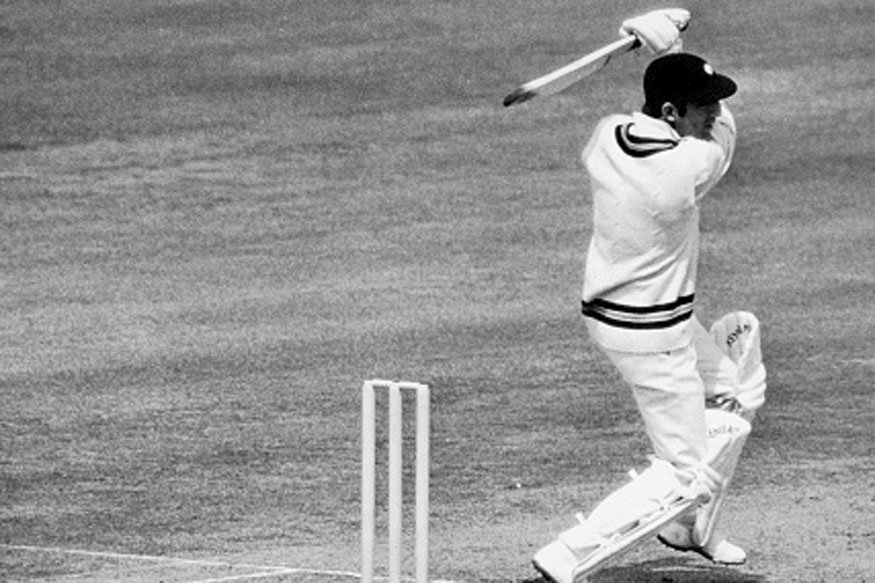Mansoor Ali Khan Pataudi is of Royal Cricket lineage, a compelling genius, and a cricketer par excellence. His every move on the field is stamped with the hallmark of class. He is a product of English cricket, but his roots were Indian. Within the span of a few years, he has added luster to a name already illustrious.
Mansoor Ali Khan Pataudi was born in Bhopal on January 5th, 1941, and was the only son in a family of four children. He started cricket as a teenager in the Welham Preparatory School at Dehra Dun. When he was just eleven, his mother took him to England. On the same ship, there were the famous three W’s (Frank Worrell, Weekes, and Walcott), returning to the West Indies after their tour of Australia in 1952. Vinoo Mankad, the outstanding Indian all-rounder, was also on board on his way to England to play in the Lancashire League.
The young Pataudi could not have been in better company. Should we not presume that the sight of such distinguished players aroused stirring memories in Iftikhar Ali’s widow, and occasionally caused her to breathe a silent prayer that young Mansoor, too, would prove worthy of his heritage?

If so, this is certainly an instance of a mother’s prayers being answered. Mansoor Ali Khan Pataudi is full of praise for George Cox, who coached him at Winchester. And recalls a match against Sussex at Hove in 1946, when he scored a scintillating 234 not out. A stroke player himself, Cox allowed the budding Pataudi ample freedom in developing his strokes. Then to Oxford, where Pataudi scored a brilliant century on his debut in the Varsity match.
He was abruptly selected to captain Oxford the following year, becoming the first Indian to be so honored. He was reappointed captain in 1963, thereby achieving the rare distinction of skippering Oxford twice. Pataudi was vice captain to Nari Contractor when India toured the Caribbean in 1962.
However, after the injury to Nari Contractor, he captained India in the last three Tests. He led India against Mike Smith’s team in all five tests in 1964. He reached top form in the fourth Test with a delightful 203 not-out. But his finest hour was yet to come with the defeat of the Australians under Bob Simpson at the Brabourne Stadium in October 1964.
Mansoor Ali Khan Pataudi completed a thousand runs in Test cricket in the second Test at Calcutta against New Zealand. It took him 16 matches and twenty-seven innings to do so. Under his belt, he has five Test centuries to his credit at that time, and, like his illustrious father, he enjoys the distinction of scoring a century against Australia in his first Test against that country. So far, he has captained India on fifteen occasions in succession, which is a record for any Indian. He first captained India when he was only twenty-one years old, thus becoming the youngest captain in international cricket.
Therefore, as a result of the injury he sustained in a car accident near Brighton Beach in 1961, Pat now prefers a two-eyed stance. His back lift is therefore from the direction of the third man, but he bats in the downward swing pass close to the right leg with elbows tucked in, almost grazing his slender figure. So, thereby eliminating any chance of a gap between bat and pad. In spite of the two-eyed stance, his offside play remains a delightful sight. Because he rapidly positions himself for the stroke.
His batting style is simple but very effective at the international level. There is no unnecessary flourish, but it has dignity and poise. Like more than one great batsman, Pataudi is vulnerable to high speed in the early stages of his innings. But once he overcomes this crucial period, he assures his side of a match-winning score. His great batting triumph was indeed his 128 not out at Madras against Australia in October 1964.

India was struggling at 56 for 4 when he joined Manjrekar. For a while, he defended resolutely, but once his eye was in, he drove McKenzie with such power and lifted Martin in front of the screen with such assurance that it reminded us of the batting of Denis Compton. It was a masterly inning, but above all, it brought to light his superb temperament, and the ability to fight when the chips are down.
At a time when the beautiful art of the cover drive and the lofted straight drive have become obsolete. It is indeed a refreshing sight to see young Mansoor Ali Khan execute them to perfection. Pataudi is a bit of a ‘dasher’, but let there be no mistake, he is too great a fighter to sacrifice a Test on the altar of “bright cricket’. What of Pataudi’s fielding? His anticipation is amazing, his movements are graceful and swift, and his pick-up and jet-propelled throws are a rare sight.
He is fond of hunting, especially big game, like most princelings. He likes Indian music and plays tabla, a type of drum played proficiently by hand. Not only that, but he is a quiet little man from the former Indian State of Pataudi, situated 35 miles from Delhi. We clearly need a few more of his type to bring back the amateur spirit, so much Jacking in the game these days. With his positive approach to the game, he has certainly changed the complexion of Indian cricket.
